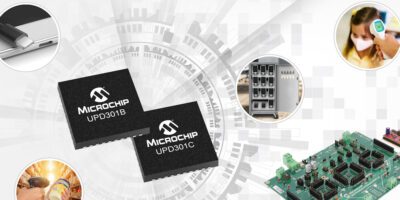Software allows designers to integrate IP in USB-C PD systems
Reasoning that USB Type-C with Power Delivery (PD) and open source software are two technologies leading the next wave of wired connectivity led to Microchip’s development of the Power Delivery Software Framework (PSF). This open source software enables designers to modify and own the IP in their USB-C PD systems. By merging proprietary code with Microchip’s fully functionable PD stack, designers can create differentiated products, choosing from Microchip SmartHubs, microcontrollers and standalone PD solutions for the USB systems.
The software framework offers both an open source code base for PD and a comprehensive programming environment, enabling designers to program microcontrollers and immediately modify PD code as their system evolves. As a result, customers can reduce time to market and overall bill of materials (BoM), says Microchip.
Leveraging both a software and hardware framework, developers can also choose from an expanded family of Microchip controller options to host PD functionality, including the new UPD301B and UPD301C standalone PD controllers. The PD architecture’s open approach enables customers to easily add a USB-C/PD port to a range of embedded applications, while also allowing customers to reallocate unused pins or CPU memory to other system functions. A range of Microchip SAM and PIC microcontrollers and dsPIC digital signal controllers (DSCs) are supported.
Designers can run PD on an existing Microchip microcontroller infrastructure by adding the UPD350 PD transceiver, or by integrating PD into more complex product offerings with proprietary system code.
All Microchip microcontrollers and standalone controllers which support USB-C share the same PD code base. The code is free to customers and can be configured and modified to implement new features and system updates without the need for a manufacturer to customise the code.
The PSF software is supported by Microchip’s MPLAB X IDE development environment. A PSF evaluation board features the SAMD20 microcontroller and the UPD350 PD PHY.




